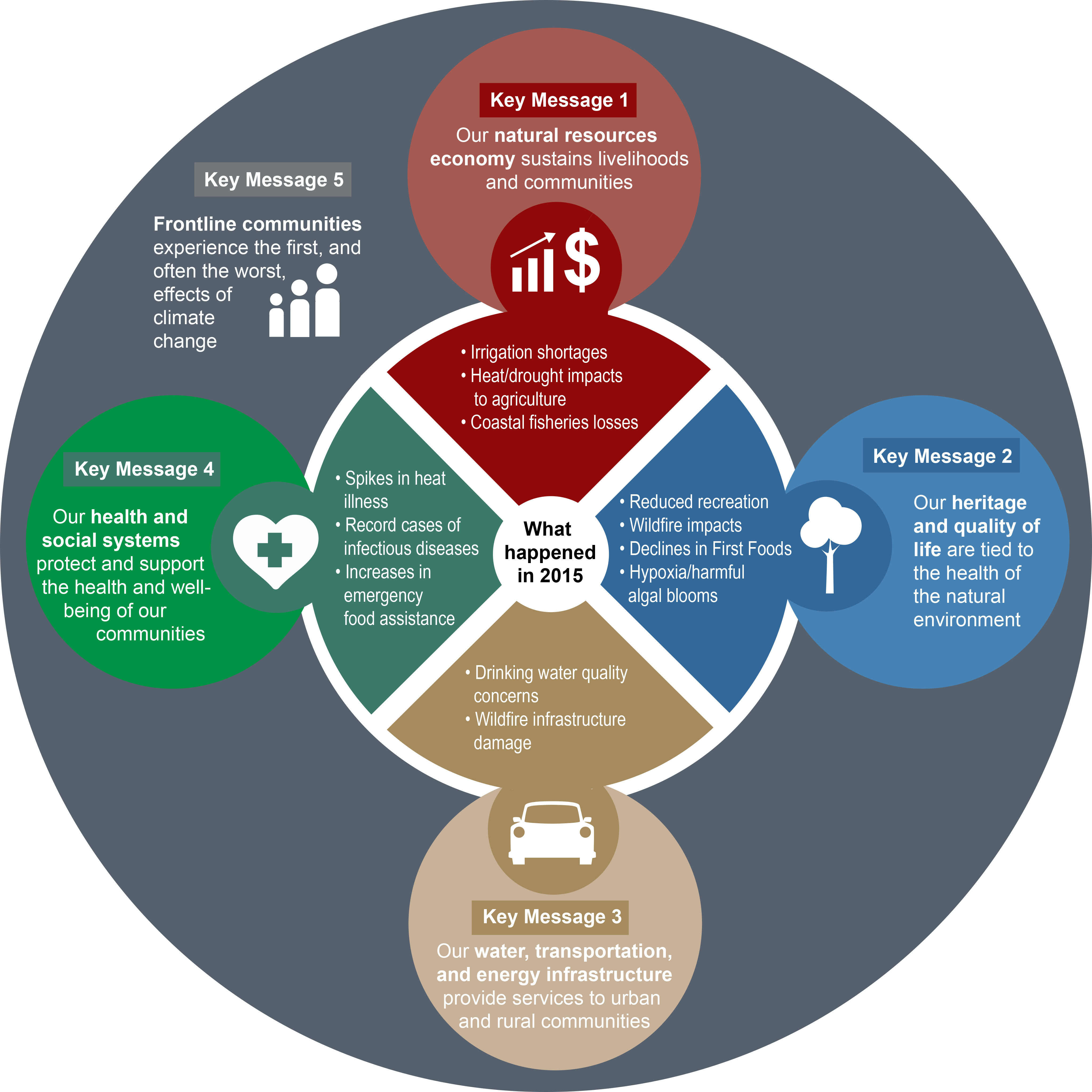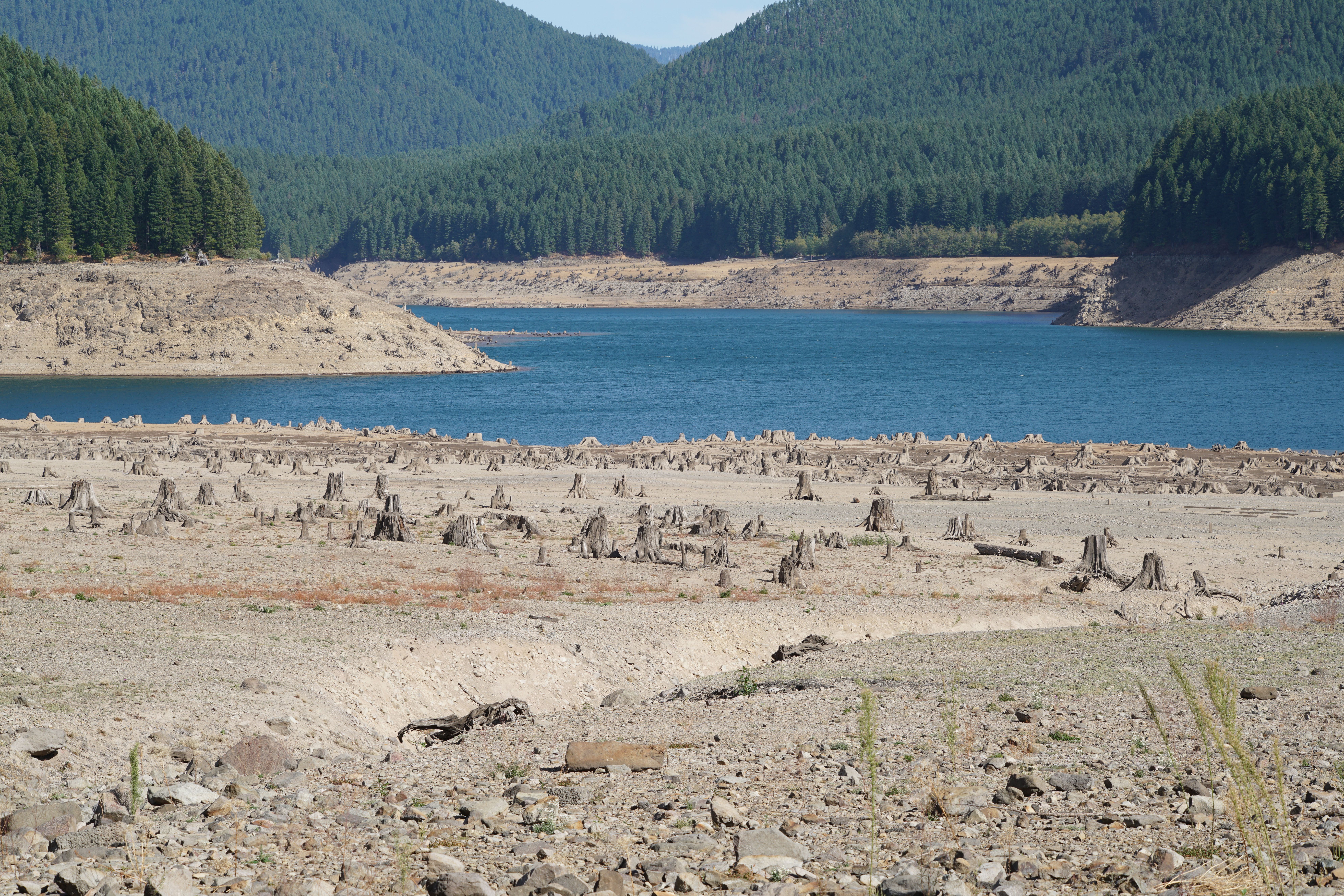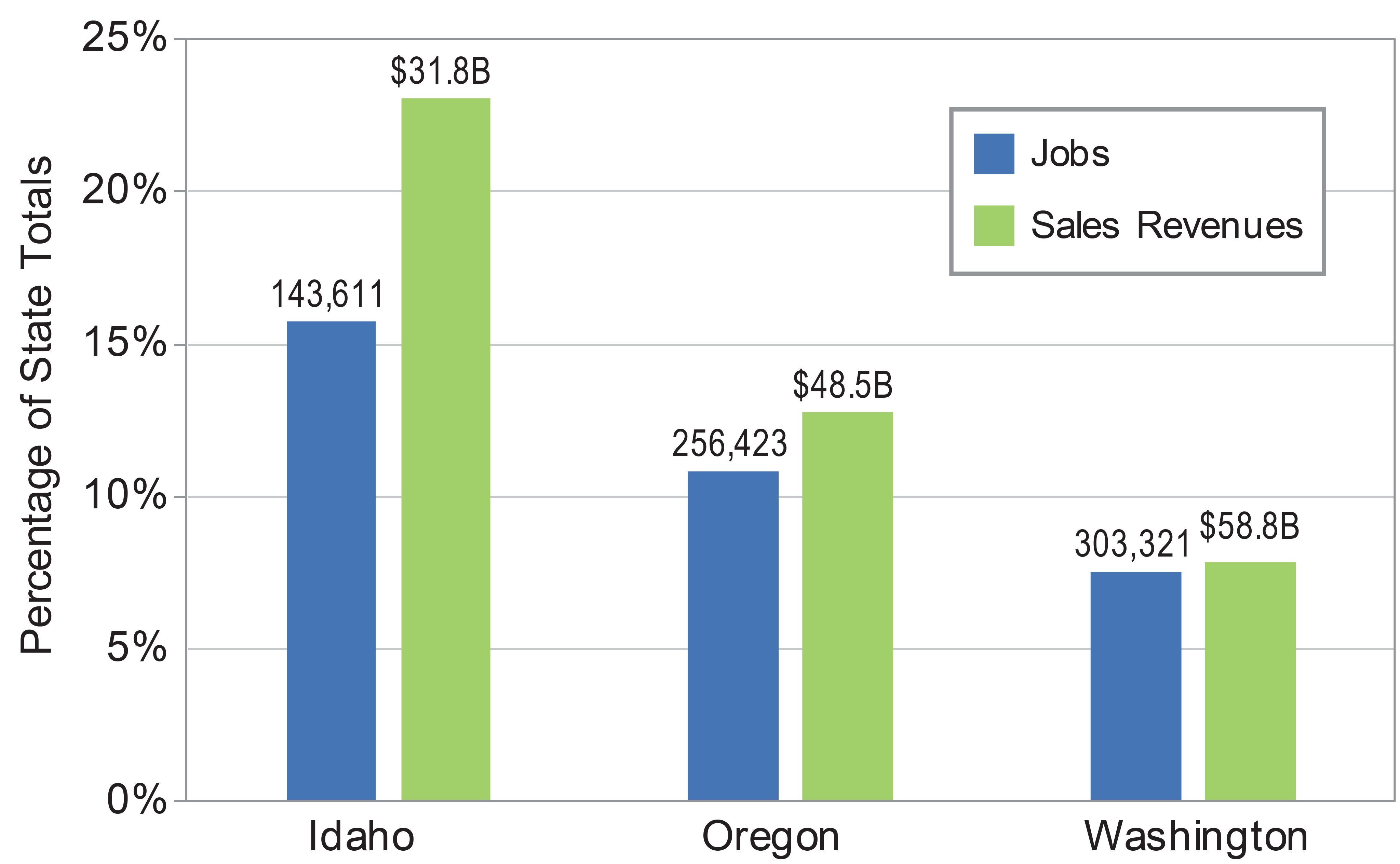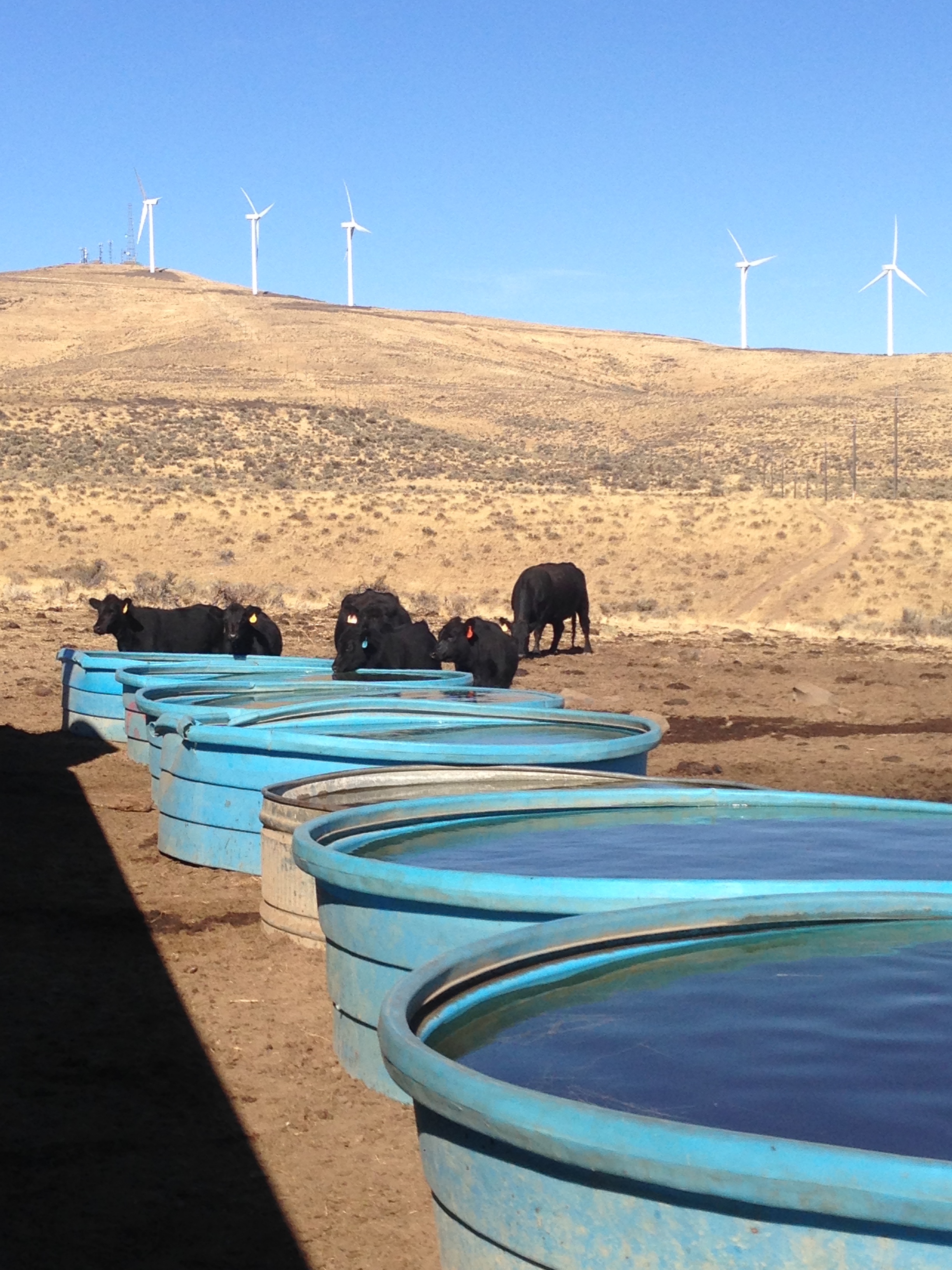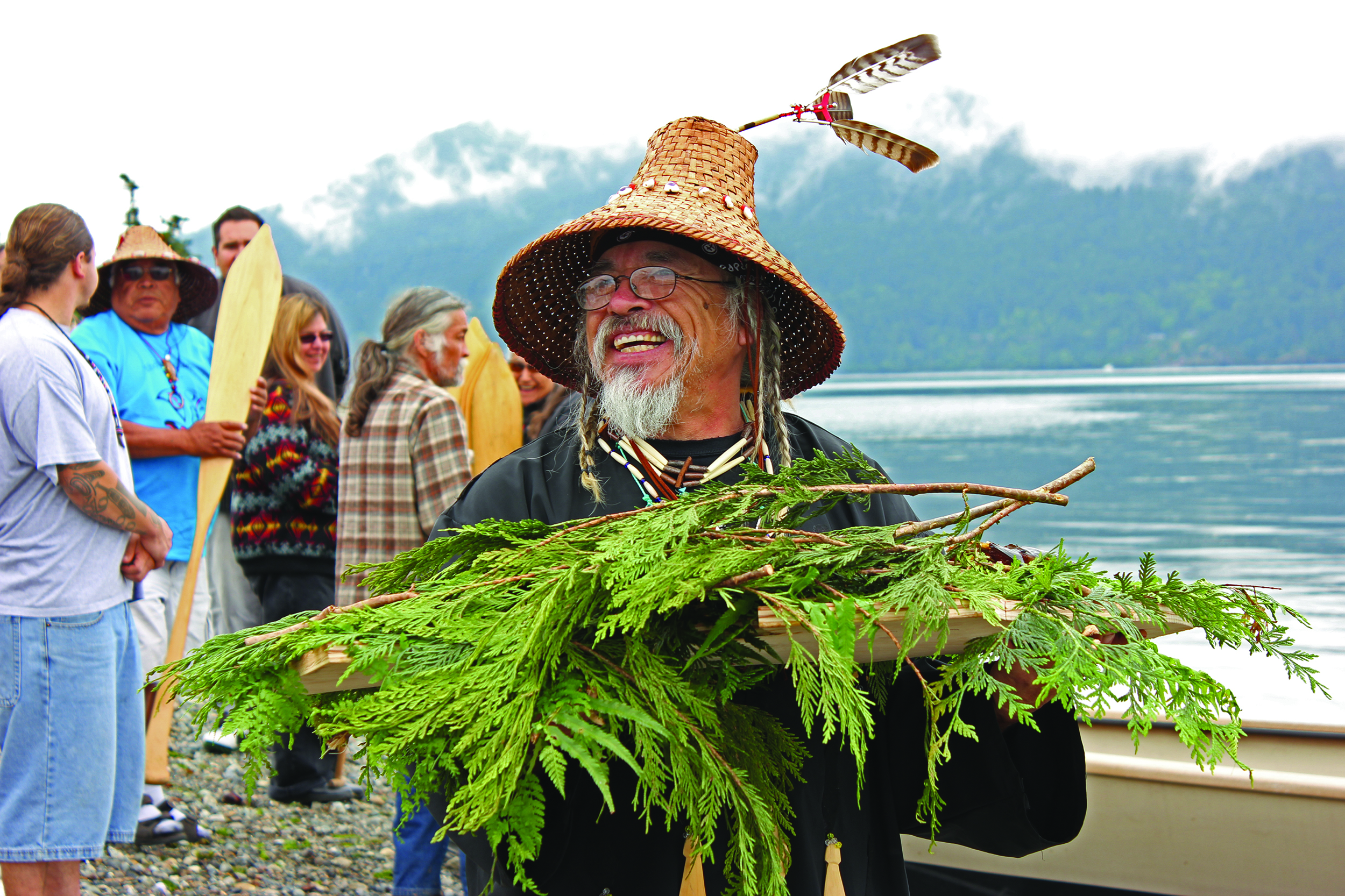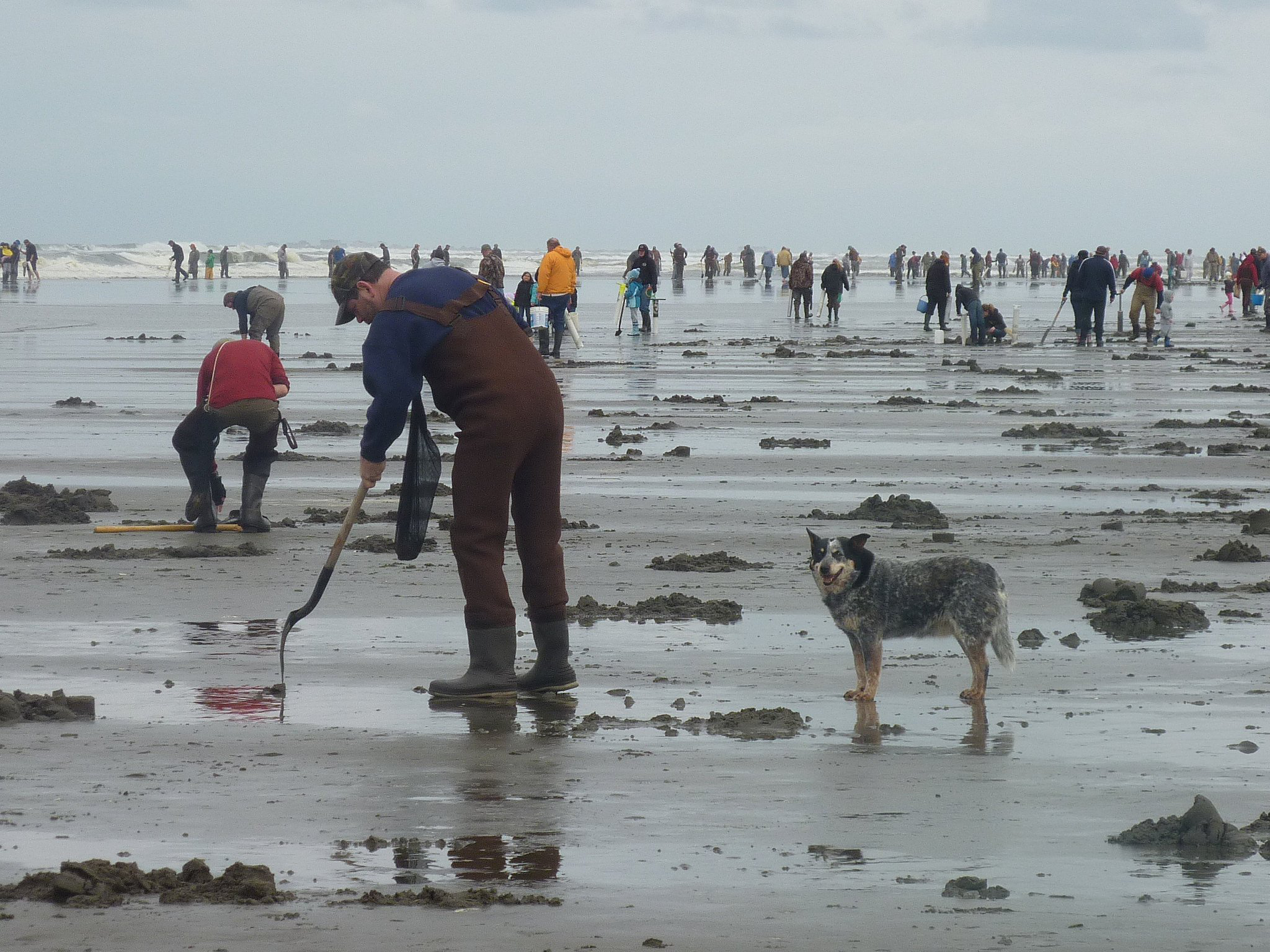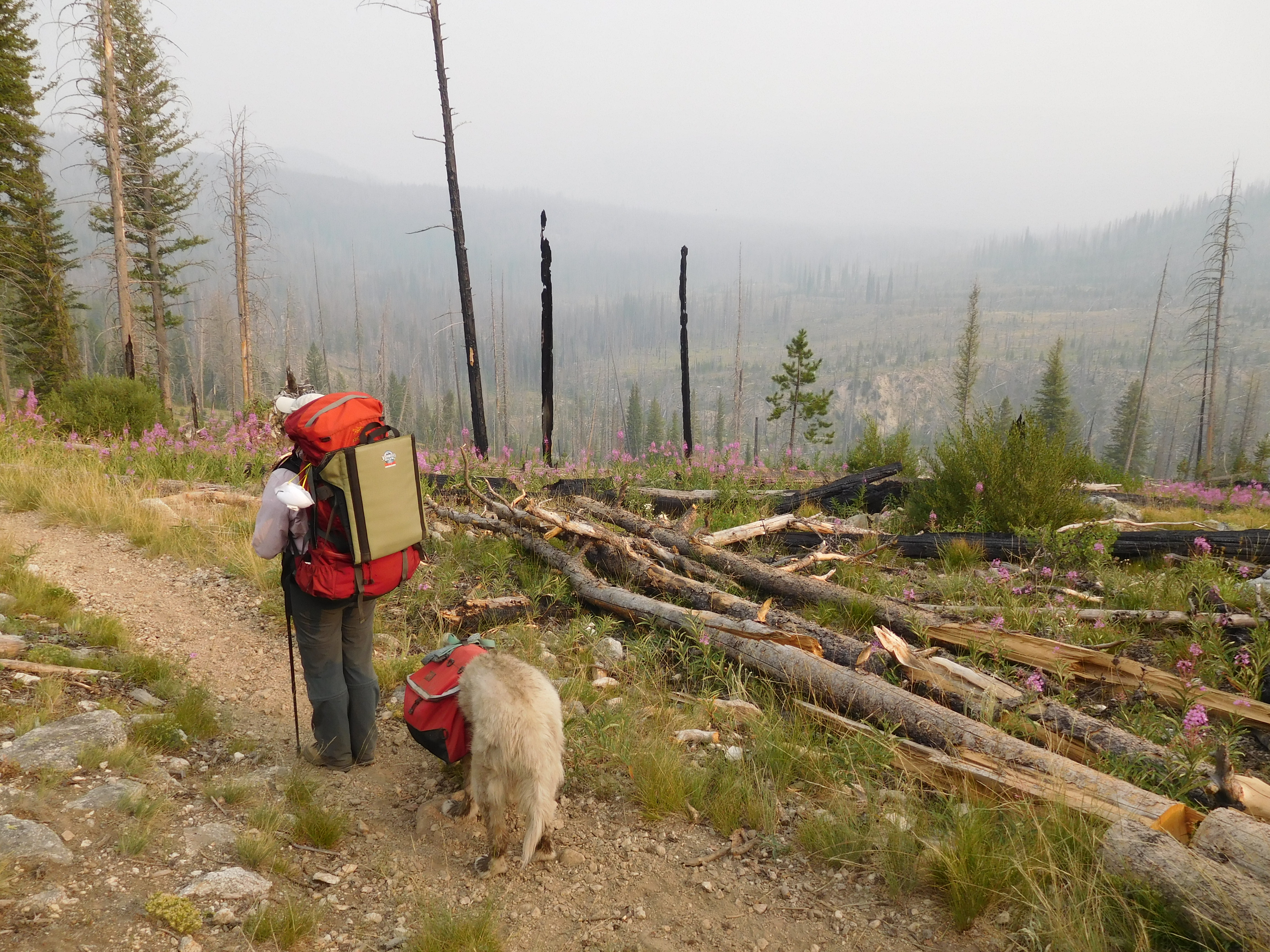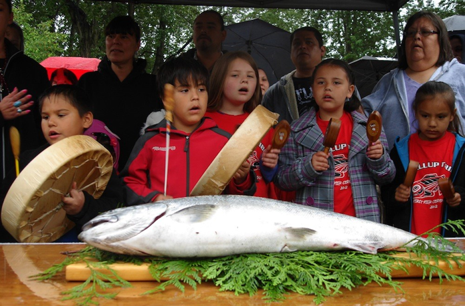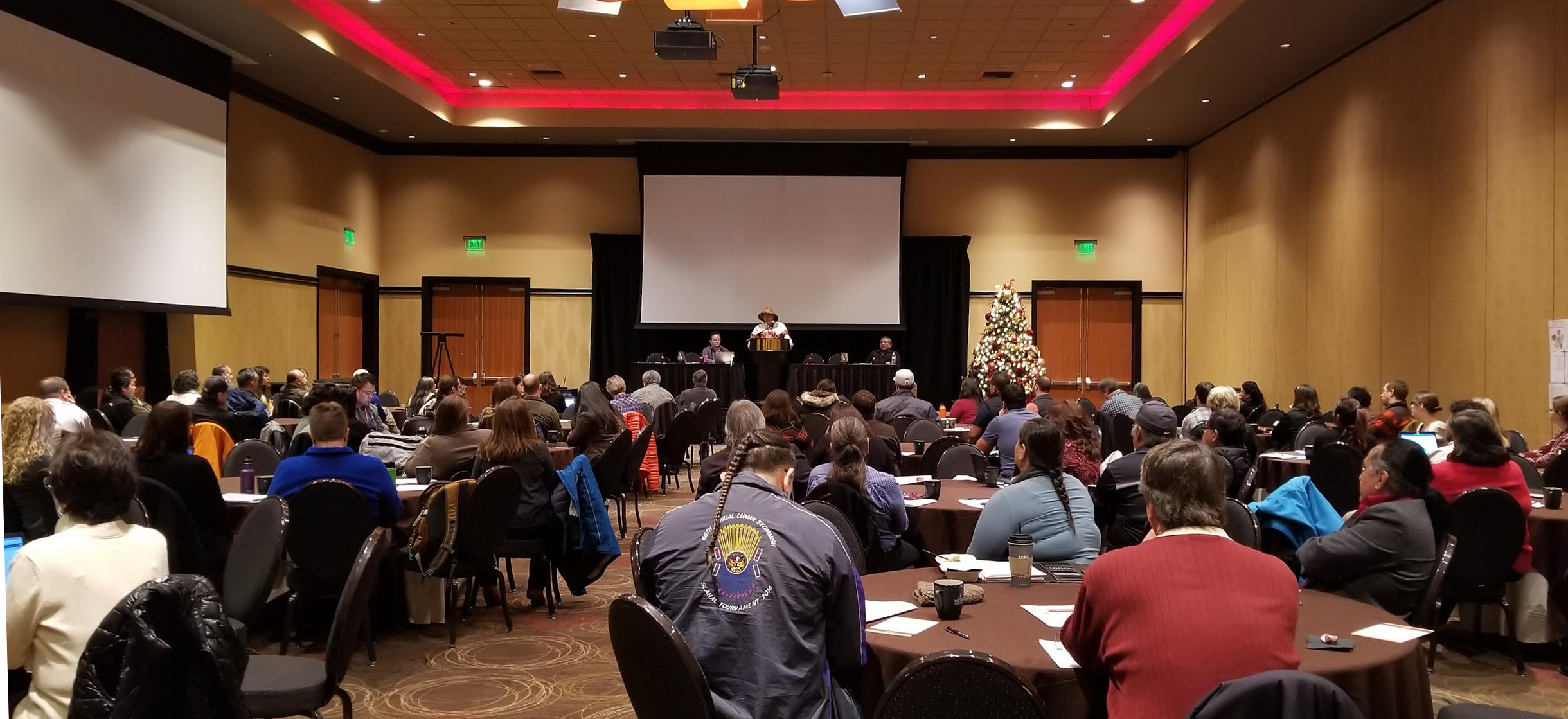This assessment focuses on different aspects of the interaction between humans, the natural environment, and climate change, including reliance on natural resources for livelihoods, the less tangible values of nature, the built environment, health, and frontline communities. Therefore, the author team required a depth and breadth of expertise that went beyond climate change science and included social science, economics, health, tribes and Indigenous people, frontline communities, and climate adaptation, as well as expertise in agriculture, forestry, hydrology, coastal and ocean dynamics, and ecology. Prospective authors were nominated by their respective agencies, universities, organizations, or peers. All prospective authors were interviewed with respect to the qualifications, and selected authors committed to remain part of the team for the duration of chapter development.
The chapter was developed through technical discussions of relevant evidence and expert deliberation by the report authors at workshops, weekly teleconferences, and email exchanges. The author team, along with the U.S. Global Change Research Program (USGCRP), also held stakeholder meetings in Portland and Boise to solicit input and receive feedback on the outline and draft content under consideration. A series of breakout groups during the stakeholder meetings provided invaluable feedback that is directly reflected in how the Key Messages were shaped with respect to Northwest values and the intersection between humans, the natural environment, and climate change. The authors also considered inputs and comments submitted by the public, interested stakeholders, the National Academies of Sciences, Engineering, and Medicine, and federal agencies. For additional information on the overall report process, see Appendix 1: Process. The author team also engaged in targeted consultations during multiple exchanges with contributing authors for other chapters, who provided additional expertise on subsets of the Traceable Accounts associated with each Key Message.
The climate change projections and scenarios used in this assessment have been widely examined and presented elsewhere11,50,263,264 and are not included in this chapter. Instead, this chapter focuses on the impact of those projections on the natural resources sector that supports livelihoods (agriculture, forestry, fisheries, and outdoor recreation industry), the intangible values provided by the natural environment (wildlife, habitat, tribal cultures and well-being, and outdoor recreation experiences), human support systems (built infrastructure and health), and frontline communities (farmworkers, tribes, and economically disadvantaged urban communities). The literature cited in this chapter is largely specific to the Northwest states: Washington, Oregon, and Idaho. In addition, the authors selected a series of case studies that highlight specific impacts, challenges, adaptation strategies and successes, and collaborations that are bringing communities together to build climate resilience. The most significant case study is the 2015 case study (Box 24.7), which cuts across all five Key Messages and highlights how extreme climate variability that is happening now may become more normal in the future, providing important insights that can help inform and prioritize adaptation efforts.
Key Message 1: Natural Resource Economy
Climate change is already affecting the Northwest’s diverse natural resources (high confidence), which support sustainable livelihoods; provide a robust foundation for rural, tribal, and Indigenous communities; and strengthen local economies (high confidence). Climate change is expected to continue affecting the natural resource sector (likely, high confidence), but the economic consequences will depend on future market dynamics, management actions, and adaptation efforts (very likely, medium confidence). Proactive management can increase the resilience of many natural resources and their associated economies (very likely, medium confidence).
Description of evidence base
Multiple studies suggest that Northwest natural resource sectors will likely be directly affected by climate change, including increased temperatures, changes in precipitation patterns, and reduced snowpack (see NOAA State Climate Summaries for Oregon, Washington, and Idaho).265,266,267 The direct and indirect consequences of these climate drivers are projected to impact regional natural resource sectors in varied ways. In many cases, the secondary and tertiary effects of climatic changes have larger consequences on the natural resource sector, such as increased insect and pest damage to forests,41 increased wildfire activity,8 changes to forage quality and availability for livestock,38,39,40 reductions in water availability for irrigation and subsequent impacts to water rights,268,269 and increasing temperatures and ocean acidity limiting the viability of existing commercial and recreational fisheries;30,55,56,57 lower snowfall is also expected to reduce the economic benefits associated with the recreational skiing industry.19,58
There is good evidence that natural resource managers are attempting to build more resilient production systems in the face of climate change through the adoption of adaptation practices (see Box 24.1), particularly those that build soil resources to increase resilience in the face of more extreme and variable weather; however, in some cases not all adaptation strategies will necessarily lead to broader soil benefits.270,271 There is also evidence that adaptive strategies coupled with increased warming will likely shorten the growing season in some parts of the Northwest due to earlier crop maturation, coupled with earlier plantings, leading to lower irrigation demand during low flow periods.34 Forest managers are also incorporating adaptation strategies focused on addressing drought and fire risks as well as broader efforts to protect and maintain key forest ecosystem services.67 While adapting to changing ocean conditions is challenging,83 some in the industry are improving monitoring and hatchery practices to reduce risks.82 And some in the outdoor recreation industry are looking for ways to benefit from increased temperatures;88 for instance, many ski resorts are diversifying their recreational opportunities to take advantage of warmer weather and earlier snowmelt.272,273
Yet, how individual actors respond to changes in climate is a source of uncertainty, particularly if these actions do not reduce climate risks or capitalize on potential benefits as expected.64 Additionally, many adaptive actions, at least in the short term, will likely be costly for individual producers to implement.37,274
Major uncertainties
Climate impacts, such as increased temperatures, reduced snowpack, and more variable precipitation and subsequent impacts on pests, disease, fire incidence, and other secondary impacts will very likely indirectly affect livelihoods and the economic viability of natural resource sectors, with more severe impacts to rural, tribal, and Indigenous communities (Ch. 10: Ag & Rural). There is, however, greater uncertainty as to how precisely these impacts are projected to affect natural resource managers’ financial security and their subsequent land-use decisions (Ch. 5: Land Changes), as well as other factors important to sustainable livelihoods and community well-being.
This is particularly relevant for key commodities that are integrated with national and international markets that are influenced by multiple factors and are difficult to predict (Ch. 10: Ag & Rural; Ch. 16: International). National and global market dynamics will likely be influenced by broader climate change effects on other natural resource sectors in the United States and across the globe,50 while also being impacted by a broad array of factors that include technological developments, laws, regulations and policies affecting trade and subsidies, and security issues. There are instances where the economic consequences will likely be positive, particularly in comparison to other regions in the United States, such as found in the dairy production sector.65 The economic impacts to regional fisheries are much less certain as iconic species and industries in the Northwest struggle to maintain viability.51,52,53 Although much is being researched with respect to the effects of climate change on forests and associated ecosystem services (e.g., Vose et al. 2016275), far less has been explored with respect to timber markets and attendant infrastructure and processing.
Description of confidence and likelihood
There is high confidence that climate change, through reductions in snowpack, increased temperatures, and more variable precipitation, is already affecting the Northwest’s diverse natural resource base. There is high confidence that these natural resource sectors provide critical economic benefits, particularly for rural, tribal, and Indigenous communities who are more dependent on economic activities associated with natural resource management. There is high confidence that climate change will have a large impact on the natural resource sector throughout this century; however, there is medium confidence that these impacts will negatively impact rural, tribal, and Indigenous livelihoods, particularly about how projected changes will economically impact specific natural resource sectors due to large uncertainties surrounding global market dynamics that are influenced by climatic and non-climatic factors. It is very likely that proactive management efforts will be required to reduce climate risks, yet there is medium confidence that these adaptation efforts will adequately reduce negative impacts and promote sector-specific economic benefits.
Key Message 2: Natural World and Cultural Heritage
Climate change and extreme events are already endangering the well-being of a wide range of wildlife, fish, and plants (high confidence), which are intimately tied to tribal subsistence culture (very high confidence) and popular outdoor recreation activities (high confidence). Climate change is projected to continue to have adverse impacts on the regional environment (very likely), with implications for the values, identity, heritage, cultures, and quality of life of the region’s diverse population (high confidence). Adaptation and informed management, especially culturally appropriate strategies, will likely increase the resilience of the region’s natural capital (medium confidence).
Description of evidence base
Since the Third National Climate Assessment, there have been significant contributions within the literature in relation to climate impacts to Northwest communities, with specific focus on how values and activities, such as recreation, iconic wildlife, management, and tribal and Indigenous cultures, will likely be impacted.
Wildlife are projected to have diverse responses to climate change.94,96,121 Droughts, wildfires, reduced snowpack and persistence, shifted flood timing, and heat stress can cause habitat loss or fragmentation84 and increase mortality of waterfowl; trout, salmon, and other coldwater fish;52,98,276,277,278 amphibians; wolverines; lynxes; and snowshoe hares.94 Other species, such as elk and deer, may benefit from future climate conditions.96
Multiple studies also demonstrate that climate change impacts will likely affect other iconic, Northwest species. Wildfires will affect berries, roots, and plants;85,105 ocean acidification is increasing shellfish mortality, and ocean acidification and warmer ocean temperatures are altering marine food webs;279,280,281 and aquatic acidification is affecting salmon physiology and behavior.282 These impacts are project to have direct negative impacts on traditional Sacred First Foods.85,86 Droughts and reduced snowpack will also reduce tribal water supplies.101,283 The loss of these First Foods is projected to have cascading physical health impacts, such as diabetes,125 and mental health impacts.124,125,189,209,214
Salmon is one of the most iconic Northwest species and important First Foods for Tribes. Salmon are at high risk to climate change because of decreasing summer flows due to changes in seasonal precipitation and reduced snowpack,284,285,286,287,288 habitat loss through increasing storm intensity and flooding,100,287 and physiological and behavioral sensitivity and increasing mortality due to warmer stream and ocean temperatures, and cascading food web effects due to ocean acidification.29,281,289,290 These impacts can be amplified due to human-placed impediments (culverts, dams), contaminants, and diseases.291,292,293
There are multiple lines of evidence verifying that reduced snowfall and snowpack in the future will adversely impact winter and snow-based recreation, including a reduction in ski visitation rates.19,58,91 This will also adversely affect summer water-based recreation such as boating and rafting,277 although warmer temperatures in the future can increase demand for water-based recreation and visitations rates to parks.88,89,90 Future habitat shifts in marine species51 and warmer ocean temperatures are projected to lead to declines in opportunities for ocean fishing recreation.55,56,57,294 Ocean acidification and harmful algal blooms are also projected to reduce recreational shellfish gathering.55 Increased wildfire frequency8 will reduce air quality, and some evidence suggests that this can reduce outdoor recreation opportunities and enjoyment. Regional case studies highlight climate impacts to snow-based recreation, ocean fishing, water-based recreation, and decreased air quality.28,53,276
Adaptation and management strategies in response to climate impacts on the natural capital and Northwest heritage are extremely varied across the region. Many tribes have begun managing First Foods and other important cultural resources through climate change vulnerability assessments and adaptation plans that incorporate both traditional knowledge and western science.85,107,109,112,113,123 Efforts to manage wildlife, habitats, and species are variable in their approaches to increasing climate resilience, with limited uncertainty in how these strategies can collectively result in increased climate resilience of the region’s natural capital.54,110,114,117,118,119,120
Major uncertainties
There is strong evidence to suggest that recreational opportunities are an important quality of the Northwest,87 but there is uncertainty around the perceived importance of future recreation opportunities’ prioritization in people’s quality of life despite the direct reduction of many recreational opportunities.127
The effects of climate change on game species are uncertain, with large potential forcing in both directions and a lack of information on which processes will dominate consequences for game species and how managers might be able to effectively adapt to changing climate.
Description of confidence and likelihood
There is high confidence that climate change and extreme events have already endangered the well-being of a wide range of wildlife, fish, and plants. There is very high confidence that these impacts will directly threaten tribal subsistence and culture and high confidence that these impacts will threaten popular recreation activities. Future climate change will very likely continue to have adverse impacts on the regional environment. There is high confidence that future climate change will have negative impacts on the values, identity, heritage, cultures, and quality of life of the diverse population of Northwest residents. There is medium confidence that adaptation and informed management, especially culturally appropriate strategies, will increase the resilience of the region’s natural capital.
Key Message 3: Infrastructure
Existing water, transportation, and energy infrastructure already face challenges from flooding, landslides, drought, wildfire, and heat waves (very high confidence). Climate change is projected to increase the risks from many of these extreme events, potentially compromising the reliability of water supplies, hydropower, and transportation across the region (likely, high confidence). Isolated communities and those with systems that lack redundancy are the most vulnerable (likely, medium confidence). Adaptation strategies that address more than one sector, or are coupled with social and environmental co-benefits, can increase resilience (high confidence).
Description of evidence base
There is a growing body of evidence suggesting that climate change will likely increase the frequency and/or intensity of extreme events such as flooding, landslides, drought, wildfire, and heat waves.27,139,142,295,296,297,298,299,300,301,302 Several investigations have highlighted the vulnerability of water supply, hydropower, and transportation to such changes.33,139,303,304,305,306,307
Infrastructure redundancy is widely accepted as a means to enhance system reliability. Multiple investigations cite the importance of system redundancy for transportation, energy, and water supply.136,146,308 Several studies describe the ways that agencies tasked with water, energy, and transportation management are exploring climate change impacts and potential adaptation options.133,146,148,151,309,310,311,312,313,314
Major uncertainties
Many analyses and anecdotal evidence link the risk of infrastructure disruption or failure to extreme events. However, the attribution of specific infrastructure impacts to climate variability or climate change remains a challenge. In many cases, infrastructure is subject to multiple climate and non-climate stressors. Non-climate stressors common to many parts of the region include increases in demand or usage from growing populations and changes in land use or development. In addition, much infrastructure across the region is beyond its useful lifetime or may not be in a state of good repair. These factors typically enhance sensitivity to many types of stressors but add uncertainty when trying to draw a direct connection between climate and infrastructure impacts.
Demographic shifts remain an important uncertainty when assessing future infrastructure impacts as well as the relative importance of certain types of infrastructure. Migration to and within the region can fluctuate on timescales shorter than those of climate change. As people move, the relative importance of different types of infrastructure are likely to change, as are the consequences of impacts.
Lastly, there is considerable uncertainty in quantitatively assessing the role of redundancy in minimizing or managing impacts. Metrics for determining the extent to which networking or emergency/backup systems yield adaptive capacity are not currently available at the regional scale.
Description of confidence and likelihood
There is very high confidence in the link between extreme events and infrastructure impacts. Most of the existing vulnerability assessments in this region, as well as those at larger spatial scales, emphasize extreme events as a key driver of past impacts. Most infrastructure is planned and designed to withstand events of a specified frequency and magnitude (for example, the 100-year flood, design storms), underscoring the importance of extreme events to our assumptions about infrastructure reliability and function. There is high confidence that rising temperatures, increases in heavy rainfall, and hydrologic changes are projected for the region.5,71,139 These changes are anticipated to raise the risk of flooding, landslides, drought, wildfire, and heat waves. There is medium confidence about the role of redundancy in determining vulnerability. Although this link has been exhibited in many case studies, quantitative evidence at the local and regional scale has yet to be developed.
Impacts discussed in this chapter (e.g., WSDOT 2014, ODOT and OHA 2016, Withycomb 2017, US Climate Resilience Toolkit 2017129,130,132,135), within other chapters (see Ch. 11: Urban; Ch. 12: Transportation; Ch. 17: Complex Systems; Ch. 28: Adaptation), and elsewhere139 highlight the connections among infrastructure systems, or between infrastructure reliability, and access to critical services. In addition, infrastructure systems are faced with a host of non-climate stressors (for example, increased demands from growing population, land-use change). As a result, there is high confidence that adaptation efforts designed to address climate impacts across multiple sectors (e.g., Portland-Multnomah County 2014, 2016146,147), as well as those that will yield social environmental co-benefits, will build resilience.
Key Message 4: Health
Organizations and volunteers that make up the Northwest’s social safety net are already stretched thin with current demands (very likely, high confidence). Healthcare and social systems will likely be further challenged with the increasing frequency of acute events, or when cascading events occur (very likely, high confidence). In addition to an increased likelihood of hazards and epidemics, disruptions in local economies and food systems are projected to result in more chronic health risks (very likely, medium confidence). The potential health co-benefits of future climate mitigation investments could help to counterbalance these risks (likely, medium confidence).
Description of evidence base
Cascading hazards could occur in any season; however, the summer months pose the biggest health challenges. For example, wildfire could occur at the same time as extreme heat and could damage electrical distribution systems, thereby simultaneously exposing people to smoke and high temperatures without the ability to pump water, filter air, or control indoor temperatures. Although some work is being done to prepare, responses to emergency incidents continue to show that there are considerable gaps in our medical and public health systems.315 Public health departments are in place to track, monitor, predict, and develop response tactics to disease outbreaks or other health threats. In the case of cascading hazards, the public health system has a role in communicating risks to the public as well as strategies for self-care and sheltering-in-place during a crisis. Unfortunately, local health departments report inadequate capacity to respond to local climate change-related health threats, mainly due to budget constraints.316 Hospitals in the United States routinely operate at or above capacity. Large numbers of emergency rooms are crowded with admitted patients awaiting placement in inpatient beds, and hospitals are diverting more than half a million ambulances per year due to emergency room overcrowding.317
Existing environmental health risks are expected to be exacerbated by future climate conditions,187 yet over 95% of local health departments in Oregon reported having only partial-to-minimal ability to identify and address environmental health hazards.194 The capacity of our public health systems is largely inadequate and unable to meet basic responsibilities to protect the health and safety of people in the Northwest.162,194 Public health leaders from state and local health authorities, state advisory boards, and public health associations have been working together for over five years to develop a plan for rebuilding, modernizing, and funding the region’s public health systems.
Socioeconomic income levels can be a predictor of environmental health outcomes in the future.187,195 Food systems face continued increases in environmental pressures, with climate change influencing both the quality of food and the ability to distribute it equitably. The capacity to ensure food security in the face of rapidly changing climate conditions will likely be a major determinant of disease burden.318
Climate mitigation strategies can in some cases have substantial health co-benefits, with evidence pointing toward active transportation319 and green infrastructure improvements.320 This evidence of health co-benefits provides an additional and immediate rationale for reductions in greenhouse gas emissions beyond that of climate change mitigation alone. Recognition that mitigation strategies can have substantial benefits for both health and climate protection offers the possibility of strategies that are potentially both more cost effective and socially attractive than are those that address these priorities independently.321 The Oregon Health Authority’s Climate Smart Strategy Health Impact Assessment found that almost all climate mitigation policies under consideration by the Metro Regional Government could improve health, and that certain policy combinations were more beneficial, namely those that reduced vehicle miles traveled.322 For example, according to 2009 data available on the National Environmental Public Health Tracking Network, a 10% reduction in PM2.5 could prevent more than 400 deaths per year in a highly populated county and about 1,500 deaths every year in the state of California alone. Working across sectors to incorporate a health promotion approach in the design and development of built environment components could mitigate climate change, promote adaptation, and improve public health.323
Major uncertainties
Preparing and responding to cascading hazards is complex and involves many organizations outside of the medical and public health systems. There is not a common set of metrics or standards for measuring surge capacity and emergency preparedness across the region.
There is uncertainty in whether domestic migration will place further stress on social safety net systems.
Description of confidence and likelihood
There is high confidence that there will be increased hazards and epidemics, which will very likely disrupt local economies, food systems, and exacerbate chronic health risks, especially among populations most at risk. There is high confidence that these acute hazards will increase due to future climate conditions and will very likely increase the demand on organizations and volunteers that respond and form the region’s social safety net. There is medium confidence that mitigation investments can help counterbalance these risks and likely result in health co-benefits for the region.
Key Message 5: Frontline Communities
Communities on the front lines of climate change experience the first, and often the worst, effects. Frontline communities in the Northwest include tribes and Indigenous peoples, those most dependent on natural resources for their livelihoods, and the economically disadvantaged (very high confidence). These communities generally prioritize basic needs, such as shelter, food, and transportation (high confidence); frequently lack economic and political capital; and have fewer resources to prepare for and cope with climate disruptions (very likely, very high confidence). The social and cultural cohesion inherent in many of these communities provides a foundation for building community capacity and increasing resilience (likely, medium confidence).
Description of evidence base
Multiple lines of research have shown that the impacts of extreme weather events and climate change depend not only on the climate exposures but also on the sensitivity and adaptive capacity of the communities being exposed to those changes.187,230,324,325 For frontline communities in the Northwest, it is the interconnected nature of legacy exposure, enhanced exposure, higher sensitivity, and less capability to adapt that intensifies a community’s climate vulnerability.187,216
There are multiple lines of evidence that demonstrate that tribes and Indigenous peoples are particularly vulnerable to climate change. Climate stressors, such as sea level rise, ocean acidification, warmer ocean and stream temperatures, wildfires, or droughts, are projected to disproportionately affect tribal and Indigenous well-being and health,106,187,326,327 economies,85,124 and cultures.105,106 These losses can affect mental health and, in some cases, trigger multigenerational trauma.125,189,209,214
There is limited research on how climate change is projected to impact farmworkers, yet evidence suggests that occupational health concerns, including heat-related concerns210,223 and pesticide exposure,328 could increase, thus exacerbating health and safety concerns among economically and politically marginalized farmworker communities.
Particularly relevant to economically disadvantaged urban populations, extensive work has been done evaluating and analyzing social vulnerability211 and applying that work to the Northwest.195 There has also been work completed considering both relative social vulnerability and environmental health data (see WSDOH 2018162).
Strong evidence through reports and case studies demonstrates that tribes are active in increasing their resilience through climate change vulnerability assessments and adaptation plans (see https://www.indianaffairs.gov/WhoWeAre/BIA/climatechange/Resources/Tribes/index.htm and http://tribalclimateguide.uoregon.edu/adaptation-plans for a list of tribal and Indigenous climate resilience programs, reports, and actions) and through regional networks (for example, Pacific Northwest Tribal Climate Change Network, Affiliated Tribes of Northwest Indians, Northwest Indian Fisheries Commission, Columbia River Inter-Tribal Fish Commission, Point No Point Treaty Council, Upper Snake River Tribes Foundation).
There are also many community organizations across the region focusing on engaging, involving, and empowering frontline communities, including communities of color, immigrants, tribes and Indigenous peoples, and others to design plans and policies that are meaningful (for example, Front and Centered, Got Green, Puget Sound Sage, Coalition of Communities of Color).
Major uncertainties
Actual climate change related vulnerabilities will vary by community and neighborhood.187,208 Therefore, the scale of any vulnerability assessment or adaptation plan will matter greatly in assessing the uncertainties.
The secondary and tertiary impacts of changing climate conditions are less well understood. For example, climate change may increase the amount and frequency of pesticides used, and the variety of products used to manage crop diseases, pests, and competing weeds.328 This is likely to increase farmworker exposure to pesticides and ultimately affect their health and well-being. Further, it is unclear how the altered timing of agricultural management of key crops across the United States (for example, the timing of cherry picking) due to increased temperatures and altered growing seasons may influence the demand for farmworker labor, particularly migrant labor, and how this might impact their livelihoods and occupational health.
There is emerging evidence that there are overlaps between environmental justice concerns and climate change impacts on these communities,233,237 and that solutions designed to address one issue can provide effective solutions for the other issue if done well.147
No systematic catalogue of the actions and efforts of frontline communities in the region to address their climate-related challenges exists. Thus, at this point, most examples of adaptation and climate preparedness are anecdotal, but these examples suggest an increasing trend to link adaptation efforts that simultaneously address both climate and equity concerns. However, this approach is still used sporadically based on the interests, needs, and resources of the communities.
Description of confidence and likelihood
There is very high confidence that frontline communities are the first to be affected by the impacts of climate change. Due to their enhanced sensitivity to changing conditions, direct reliance on natural resources, place-based limits, and lack of financial and political capital, it is very likely that they will face the biggest climate challenges in the region. However, there is a significant amount of uncertainty in how individuals and individual communities will respond to these changing conditions, and responses will likely differ between states, communities, and even neighborhoods. Thus, it is the complex interaction between the climate exposures and the integrated social-ecological systems as well as the surrounding policy and response environment that will ultimately determine the challenges these communities face.
